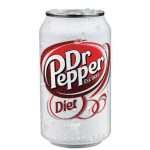Wonton soup, a staple in Chinese cuisine, is often sought after for its delicious blend of flavors and satisfying ingredients. As a dish enjoyed by countless individuals worldwide, it is important to consider the caloric content and the potential impact on one’s diet when indulging in this culinary delight. Demystifying the health aspects of this popular dish is necessary for those seeking a balanced and nutritious diet.
The main components in a bowl of wonton soup include the wontons themselves, which are small, soft dumplings filled with either pork, shrimp, or vegetables and wrapped in a thin dough. Accompanying these tasty morsels is a delicate broth, typically made from chicken or vegetable stock, and infused with subtle flavors from various herbs and spices. Understanding the calories and nutritional information of each ingredient allows one to make an informed decision when choosing to enjoy this Asian classic.
It is crucial to remember that factors such as restaurant preparation, serving size, and ingredients used may influence the calorie count and nutritional content of wonton soup. The variations in recipes can result in differing caloric values. By acknowledging these nuances, one can properly assess the impact of this dish on their overall diet and make alterations accordingly.
Nutritional Overview of Wonton Soup
Wonton soup is a popular Chinese dish often served as a starter or a light meal. The soup generally consists of a rich broth, filled wontons, and vegetables. While it can be a tasty option for those craving Asian cuisine, it’s critical to understand its nutritional composition.
Macronutrients Found in Wonton Soup:
- Protein: Wontons typically contain a mixture of ground meat (such as pork or shrimp) and vegetables, providing the soup with protein content. Protein levels may vary depending on the chosen filling, but a standard serving of wonton soup can contain 7-10 grams of protein.
- Carbohydrates: Since the dumplings are made of wheat-based wrappers, carbohydrates are present in moderate amounts. A standard serving of wonton soup can carry 15-30 grams of carbs.
- Fats: The fat content in wonton soup predominantly depends on the cooking method. A traditional bowl of this soup served in broth has low fat content, approximately 2-4 grams of fat per serving. Fried wontons will significantly increase the fat levels.
Below is a concise nutritional summary of a standard serving of wonton soup (approximately 1 cup or 240 mL):
| Nutrient | Amount (g) |
|---|---|
| Calories | 150-250 kcal |
| Protein | 7-10 g |
| Carbohydrates | 15-30 g |
| Fats | 2-4 g |
It’s important to note that these values can vary depending on individual recipes, and serving sizes.
Apart from macronutrients, wonton soup also provides some essential micronutrients. For instance, vegetables added to the soup (such as bok choy or spinach) contribute to its vitamin A and C content. The ground meat filling is a source of iron and zinc, while the broth may provide minerals such as sodium.
However, one must consider potential downsides when analyzing the nutritional value of a wonton soup. High sodium levels from broth and added soy sauce might be a concern for those keeping a close eye on their salt intake. Additionally, people with gluten intolerance need to be cautious since wheat-based wrappers are used for the dumplings.
In summary, a light and well-prepared wonton soup can serve as a protein-rich, low-fat dish that provides essential micronutrients without a high calorie count. Be mindful of sodium levels and, where possible, select low-sodium broth options.
Average Calories in Wonton Soup
Homemade Wonton Soup
When making homemade wonton soup, the ingredients that are used dictate the total calorie count of the soup. A typical serving size for wonton soup is about 8 ounces (240 mL) or 1 cup.
Here is a breakdown of calories in key ingredients used in a homemade wonton soup:
- Wonton wrappers (1 sheet): 20-30 calories
- Ground pork (1 oz / 28 g): 100 calories
- Shrimp (1 oz / 28 g): 30 calories
- Chicken broth (1 cup / 240 mL): 10-20 calories
- Green onions (1 Tbsp / 6 g): 1 calorie
- Soy sauce (1 Tbsp / 15 mL): 8 calories
Please note, these values may vary depending on the specific brand of ingredient used.
In general, a serving of homemade wonton soup with 2-3 pork and shrimp-filled wontons can have around 170-240 calories. The addition of more vegetables such as bok choy or mushrooms will increase the nutrient content without significantly increasing the total calories.

Restaurant-Style Wonton Soup
The nutritional profile of restaurant-style wonton soup can vary greatly depending on where it is ordered. Typically, a restaurant version is higher in sodium and may use higher-calorie ingredients.
Here is an example of a single serving (8 ounces / 240 mL) of typical restaurant-style wonton soup:
| Ingredient | Calories |
|---|---|
| Wontons (2-3 pieces) | 80-120 |
| Chicken broth | 10-20 |
| Green onions | 1 |
| Soy sauce | 8 |
| Vegetables | 5-10 |
Calories per ingredient can vary depending on the specific restaurant’s recipe.
On average, an 8-ounce serving of restaurant-style wonton soup can contain 100-160 calories. Overall, the key factors in determining the number of calories in wonton soup are the recipe, portion size, and additional ingredients.
Factors Affecting Calorie Content
Wonton Filling Varieties
The calorie content of wonton soup can vary greatly depending on the type of filling used inside the wontons. Common filling options include:
- Pork: High in protein and relatively higher in calories due to its fat content.
- Shrimp: Lower in calories compared to pork and a great source of lean protein.
- Chicken: Another lean protein option, with calorie content similar to shrimp.
Additional ingredients mixed with the protein, such as vegetables, mushrooms, and spices, can also impact the overall calorie count, although they typically contribute minimally.
Broth Ingredients and Preparation
The base of wonton soup is predominantly a broth, which can significantly influence calorie content. There are several factors to consider:
- Type of stock: Using a chicken, beef, or vegetable stock can have varying caloric densities.
- Additions: Ingredients like soy sauce, sesame oil, and garlic can add flavor, but also increase calories.
- Preparation method: Broths made from scratch allow for control over ingredients and calorie content, whereas store-bought versions may contain additional calories from added sugars or fats.
It is essential to carefully read labels on store-bought broth and opt for low-sodium and lower-calorie options when possible.
Portion Sizes
The serving size of wonton soup can impact the number of calories consumed. Larger portion sizes equate to more calories, while smaller portion sizes contain fewer calories. Consider the following guidelines when determining an appropriate portion:
| Portion | Calories Range |
|---|---|
| Small (1 cup) | 100-150 |
| Medium (2 cups) | 200-300 |
| Large (3 cups) | 300-450 |
Keeping these factors in mind while preparing or ordering wonton soup can help in making an informed decision about the caloric content of the meal.
Calorie Comparison with Other Soups
When it comes to monitoring calorie intake, it’s important to understand how different soups stack up against each other. In this section, we will provide a brief comparison of wonton soup calories with other popular types of soup. For reference, a standard 1-cup serving is used for each soup.
Wonton Soup: One serving of wonton soup contains around 100-150 calories. This Chinese staple is a flavorful broth filled with small dough-wrapped meatballs (wontons). The dough and filling contribute to the soup’s overall calorie count. Vegetables may be added, but they generally have minimal impact on the total calorie content.
As a point of comparison, let’s examine 4 other popular soups:
- Chicken Noodle Soup: Usually clocking in at around 120-150 calories per 1-cup serving, chicken noodle soup is similar in caloric content to wonton soup. The primary contributors to its caloric content are the noodles and chicken.
- Tomato Soup: A 1-cup serving of tomato soup typically contains 90-100 calories. This vegetarian option has a lower calorie count mainly due to the absence of meat or pasta. Cream-based tomato soup, however, has a higher calorie content of 160-200 calories per cup.
- Minestrone Soup: This Italian classic averages 160-180 calories per 1-cup serving. The calorie count is higher due to the presence of multiple ingredients, including pasta, beans, and assorted vegetables. Additionally, the broth is often thickened with tomato sauce.
- Clam Chowder: A 1-cup serving of New England clam chowder contains 200-230 calories. The creamy, rich broth significantly increases the calorie content of this soup, making it a heavier option compared to the previously mentioned soups.
Here is a brief summary table showcasing the calorie comparison:
| Soup | Calorie Range per 1-cup serving |
|---|---|
| Wonton Soup | 100-150 calories |
| Chicken Noodle Soup | 120-150 calories |
| Tomato Soup (Plain) | 90-100 calories |
| Tomato Soup (Cream-based) | 160-200 calories |
| Minestrone Soup | 160-180 calories |
| Clam Chowder | 200-230 calories |
Based on this comparison, it’s evident that wonton soup falls within the lower calorie range of popular soup choices. Its simple ingredients and broth-based nature make it a suitable option for those looking to enjoy a flavorful, filling soup while still keeping calorie counts relatively low.
Health Considerations of Wonton Soup
Wonton soup, a popular Chinese dish, is known for its delightful taste and comforting warmth. However, when it comes to nutrition and calories, there are certain aspects to consider before indulging in a bowl of this soup.
Low-Calorie Recipe Alternatives
If you’re looking to reduce your calorie intake, there are a few low-calorie recipe alternatives that can be adopted when preparing wonton soup. Consider the following modifications:
- Broth: Opt for a low-sodium chicken or vegetable broth to decrease the sodium content.
- Wonton fillings: Use lean ground turkey or chicken instead of pork, and include more vegetables such as cabbage, mushrooms, and green onions for added nutrition.
- Cooking method: Steaming or boiling the wontons instead of frying reduces the overall calorie and fat content.
Benefits of Soups in a Balanced Diet
Incorporating soups, like wonton soup, into your diet can provide various health benefits, especially when made with the low-calorie recipe alternatives mentioned above. Here are some notable benefits:
- Hydration: Soups have a high water content, which contributes to maintaining adequate hydration levels and helps with digestion.
- Nutrition: Adding vegetables to your wonton soup increases the nutritional value, providing essential vitamins, minerals, and fiber.
- Weight management: Lower-calorie soups can be filling and help control portion sizes while still satisfying your appetite.
By considering the health aspects of wonton soup and making appropriate adjustments, you can enjoy this delicious dish while maintaining a balanced and nutritious diet.



